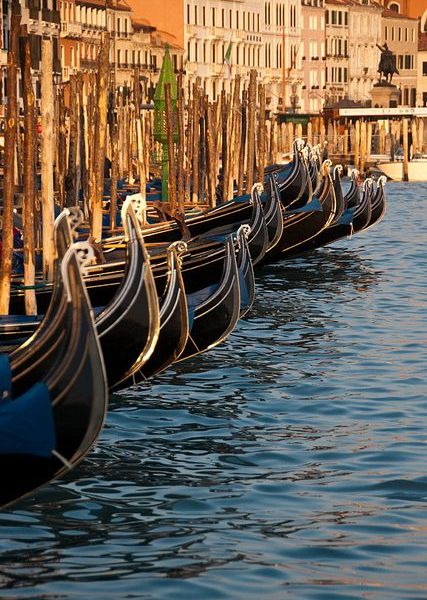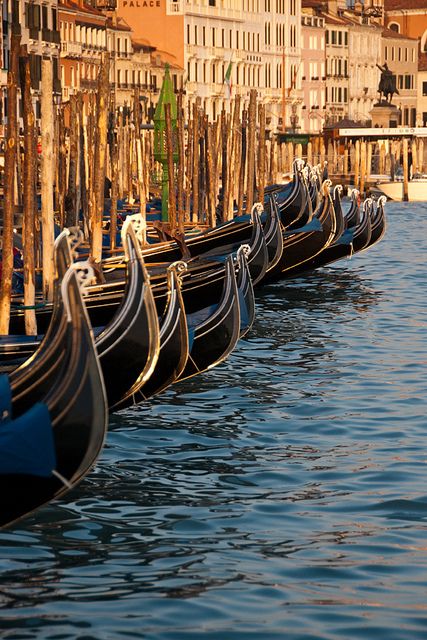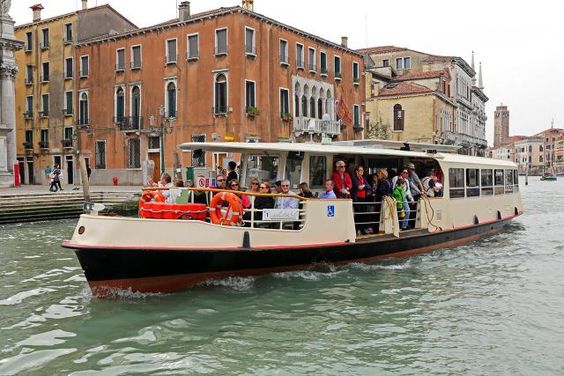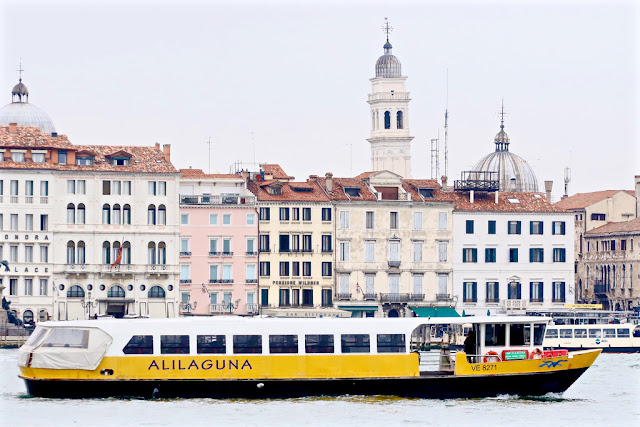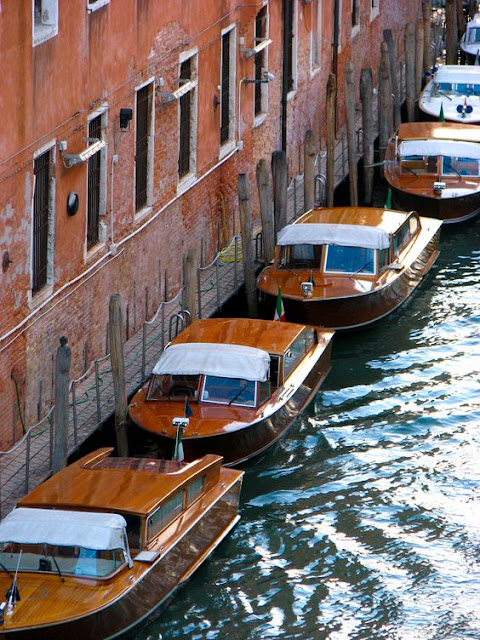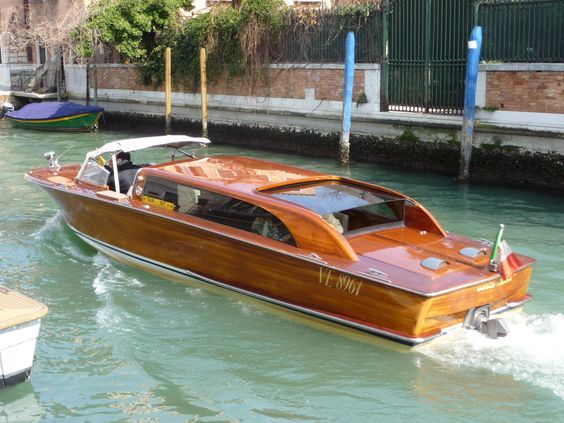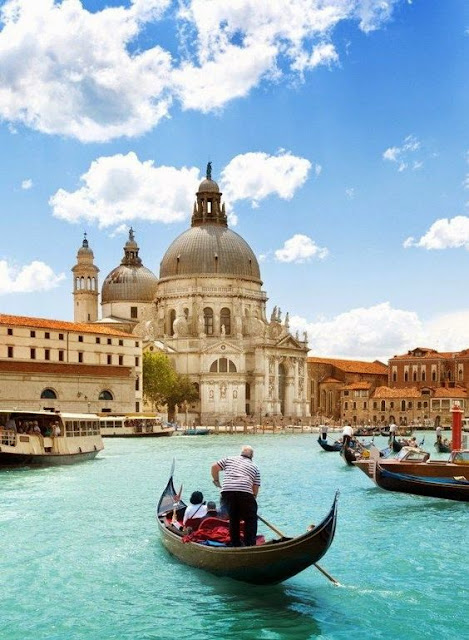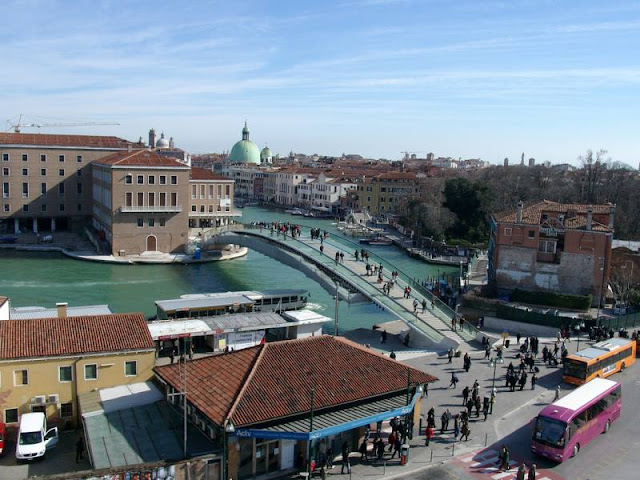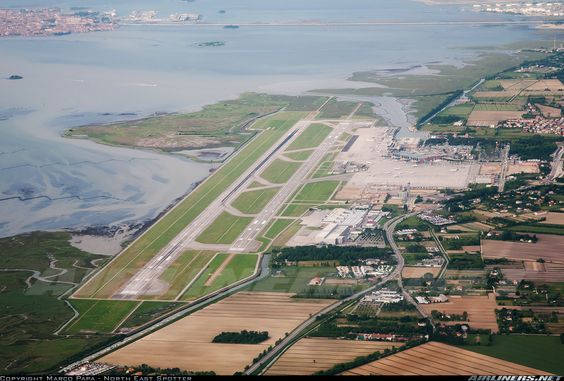A PRACTICAL GUIDE TO TRANSPORT IN VENICE
People worldwide dream of wandering among the astounding Gothic architecture and impressive network of canals full of boat traffic in ‘Venezia’. Today, Venice shines with the majestic beauty and intrigue of a place with a once thriving trade economy and radiant culture from an almost forgotten era. Travelers long to visit and be transported back to Venice’s heyday in the fifteenth and sixteenth centuries, when business, the arts, and architecture flourished.
What about the practicality of getting around an ancient city, which has water for roads and boats for cars? Transport in Venice, although a little more expensive than other Italian cities, is actually not difficult. Read How to Visit Venice on a Budget if looking to limit spending. There are different public and private modes of transportation, which are mostly boats, within the ‘Floating City’. Also, there are a few ways to arrive in Venice’s city center, depending on whether visitors are coming by plane, train, bus, or car.
Vaporetto
Run by the ‘Azienda del Consorzio Trasporti Veneziano’ or ACTV, Venice’s water buses or ‘vaporetti’ are the most economical and convenient form of public transportation. One ticket for the ‘vaporetto,’ which translates to ‘little steamboat,’ is good for seventy-five minutes of traveling and costs €7.50. If using the vaporetti three or more times per day, buy an ACTV Tourist Ticket, which provides visitors with unlimited vaporetto rides for one to seven days. A one-day ticket costs €20, a two-day ticket costs €30, a three-day ticket costs €40, and a week-long ticket is €60. Children under the age of six travel for free. Young people under the age of twenty-nine can buy the €6 Venice Rolling Card, where they can load money and receive discounted prices.
Tickets must be validated at the electronic ticket machines at the entrances before passengers board. The machine stamps the tickets with the date and time. Do not risk being caught without a validated ticket; passengers without tickets will receive a fine upwards of €50. Tickets can be bought online, at ticket machines and kiosks near vaporetti stops, or at permitted supermarkets, newsagents, and tobacco shops.
Nineteen water bus lines operate within and between Venice and the lagoon’s over one hundred islands. Since the vaporetti also go to the islands in the Venetian lagoon, read about The Five Most Underrated Islands in the Venetian Lagoon and choose some to visit. Although some have more limited hours, most of the lines run from 5am to midnight. Remember that vaporetti come less frequently at night. The main vaporetto line for visitors is the number one line, which travels along the Grand Canal from Venice’s main train station, Santa Lucia, to Piazza San Marco or Saint Mark’s Square. The entire trip takes a little under an hour and acts as a nice boat tour of Venice for travelers. During the day, the number one comes every ten minutes. Other lines are less frequent.
Alilaguna
The ‘alilaguna’ is also a water bus, but it only takes travelers from Venice’s Marco Polo Airport to the city center and vice versa. There are fixed routes, timetables, and prices. A one-way ticket from the airport to Venice is €15 and roundtrip is €27.
Water Taxies
Water taxies are useful if wanting to get directly from one specific place to another at an exact time. They are also helpful if arriving or leaving at night or traveling with a lot of luggage, as the drivers will bring passengers as close to their hotel or rented apartment as possible. The taxies are sophisticated wooden boats that fit between six and eight people, depending on the number of packed bags.
Water taxies are pricier than water buses. From Venice’s airport a water taxi ride costs between €100 and €110. Officially, rates begin at a baseline of €15 plus €2 per every minute. There is a €5 charge when they are summoned to a visitor’s accommodation. Prices are higher for more than four passengers. Water taxies can be booked in advance online, through hotels, or directly at the dock just outside Venice’s airport. Water taxi ranks are also found at Santa Lucia train station, and ‘Piazzale Roma.’ Official taxies must have yellow license plates.
Private Boat Ride
The most unique and intimate way to experience Venice by boat is a private evening boat ride. Another option during the day is a personalized private boat tour of the Venetian islands of Mestre, Murano, and Burano. This means visitors can avoid the crowds on the vaporetti and truly enjoy what the Venetian canals and lagoon have to offer.
Gondola
A relaxing ride in a ‘gondola’ is a quintessential Venice experience for all foreign visitors. Although the ‘gondole’ were the taxis of Venice in the past, gondoliers generally take the same route through the most popular attractions and do not take passengers back to their accommodation or wherever they please. Find gondola ‘stazi’ or stops along the Grand Canal and near major tourist sites, like the elegant ‘Ponte Rialto’ or Rialto Bridge.
Gondola rides are pricier than vaporetto rides, but one time in a gondola does not have to break the bank, especially if shared with a lover, read Valentines in Venice for more romantic tips, or with a group of friends or family. Although it varies from year to year, the official gondola guidelines set the price at €80 for a forty minute ride for a group of one to six people. The cost goes up by €40 for every extra twenty minutes after that. Gondola rides tend to get more expensive in the evening. After 7 or 8pm, the forty minutes goes up to €100.
Be aware of those who try to charge more than the set prices. Remember these prices are only guidelines and visitors can always bargain and negotiate to pay a fair price. Gondoliers charge more for singing or any musical accompaniment. Tipping is not always expected in Italy, but it is common practice to leave the gondoliers a tip.
Traghetto
If a gondola ride is not in the budget, hop in a ‘traghetto’. The traghetti are the same shape as the gondole, but they are less ornate and provide a service rather than leisure. They are used to transport people from one side of a canal to another, where there are no immediate bridges available. One quick crossing only costs a few euros, which can be given straight to the driver. They usually operate from 9am to 6pm and are found at the Rialto Bridge, Gritti Palace, and outside other attractions.
On Foot
Walking the streets of Venice could arguably be the best way to explore this fairytale of a city. Regardless, visitors must take advantage of both the winding streets and the canals. There are countless bridges that link streets, which can be quite narrow and often confusing, but that is just part of the Venice adventure. Pick up a map of the city upon arrival, as Google Maps and other GPS applications often do not work well in Venice. After a few moments of feeling lost, visitors will soon find the other tourists and desired sights. Then, they will feel like true Venetians.
Arriving by Car
There are no cars in the ‘centro storico’ or historical center of Venice, so if driving to Venice know that cars must be parked and left in Piazzale Roma, which is across from Santa Lucia Train Station. Read Italy’s Three Best Road Trips for some tips about renting a car and driving in Italy, as well as some Italian road trip inspiration. From Piazzale Roma, catch a vaporetto or water taxi into Venice.
Arriving by Train or Bus
From Venezia Santa Lucia Train Station, which is also near the main buses stops, take a vaporetto or water taxi into Venice. Make sure to get off at Santa Lucia and not Venice’s other train stop, Venezia Mestre.
Arriving by Airplane
From Venice’s Marco Polo Airport, it is best to take a water taxi or the Alilaguna water bus to the city center. A water taxi will take about twenty-five minutes, while the Alilaguna takes about an hour.
From all of us at Roman Candle Tours, whether getting around Venice by boat or on foot, enjoy the serenity of the canals and the beauty throughout the maze of streets.
If you liked this article, read also “HOW TO VISIT VENICE ON A BUDGET”
